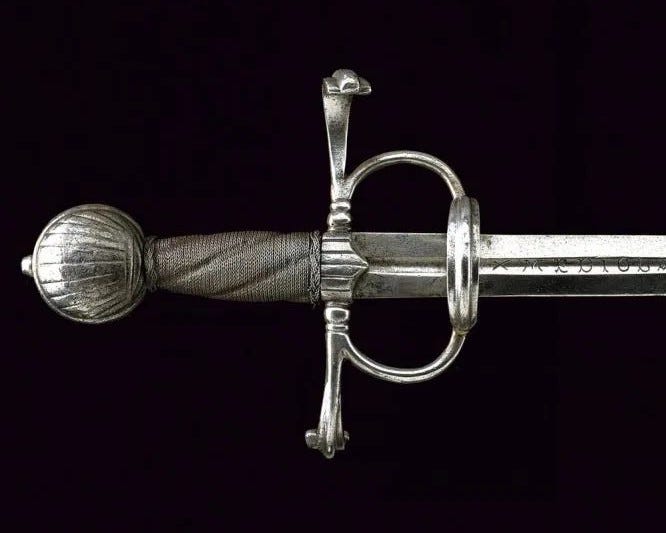Don Durito
Legend
What historians are we talking about?
Read the thread? Literally at least a half dozen posts directly citing historians?What historians are we talking about?
But regardless of what HEMA calls things, the rapier existed in the mid 15th century.
If you want to get persnickity, 1e uses "sword, long" in the PH weapon tables, uses "long sword" as two words everywhere else in the PH, and uses all three forms in the DMG (though I'll concede the two word variation is most common).AD&D actually uses the term "long sword," two words, which in Shakespeare's time sometimes did refer to a general one-handed sword. Basic D&D just called it a "sword," or when clarity was needed, "sword, normal." The bastard sword was correctly described in both games; it was starting with 3e that D&D started officially not quite understanding what a bastard sword was.
I care more about what historians call the thing than what HEMA practitioners call it.
It's from frustration more than anything.I have to admit I find the obnoxiousness here somewhat puzzling.


Do you have any source on the specifications of a "Dress Sword" which separate it from other swords?It really didn't. Transitional swords existed in the 15th century in Italy and Spain, that were called "dress swords," which provided the etymological origin of the German and English cognates of "rapier." This is a little like arguing that the existence of the show American Gladiator meant that the ancient Romans battled on TV using padded sticks.
I largely agree, although we know that Gary and co were very interested in history, but also limited in what books they had access to in part due to limits of the local library when they were first writing.Sure.
But, for our purposes, the real question is whether the game category is more similar to a modern historian's view, a HEMA practitioner's view, or a media/literature/movie view.
The authors of the game have never been, as I understand it, particularly great historians. Modern HEMA practitioners didn't come around until the 80s and 90s. So, I suspect the game is largely influenced by fiction, and only secondarily by history. Errol Flynn, Douglas Fairbanks, Jr., and Basil Rathbone movies are probably more relevant than history.
Another method of reinforcing the leather defence has been named the ‘Trellice’ coat. It is always difficult to discover exactly what the primitive draughtsman intended to represent in the way of fabrics, and it is quite open to question whether these diagonal lines may not merely suggest a quilting of linen or cloth. If it is intended to represent leather the trellice lines would probably be formed of thongs applied on to the groundwork with metal studs riveted in the intervening spaces (Plate I). This arrangement of lines is very common on the Bayeux Tapestry.
I have to admit I find the obnoxiousness here somewhat puzzling.
Does it? I could be convinced (I'd kind of like to be) but I'm somewhat sceptical. I did a bit of quick digging earlier. I couldn't find all that much that was recent on Google Scholar but this article from 2014 talks about the social conditions in which people started wearing swords more often in streetlife the the late 15th century but then talks about how the rapier eventually developed out of that.It's from frustration more than anything.
Academia says there's been Rapiers since the 1460s. People who spend their entire lives studying weapons and armor in order to seek one of the most prestigious postings in the "Knows a lot about swords" category of careers have stated as such.
How do you know they did this? I was trying to find out why they did this - out of basic interest - and I can't find anything to suggest the name was changed let alone why.Hell. The thing you're arguing is a Sidesword WAS listed as a Sidesword at least until December of 2024.

Virtus Martialis used it as an example of a sidesword and explicitly notes that the Met called it a sidesword at the time.
However the sword-nerds of the Met RECLASSIFIED it as a rapier earlier this year.
Well, perhaps early Renaissance is more accurate.Curious, because I have heard is said that "medieval" D&D is correctly represented by the Wars of the Roses period (1455-87).
Which is, technically, Renaissance.
Although no true Englishman would be seen dead with a silly European rapier for another couple of hundred years.
